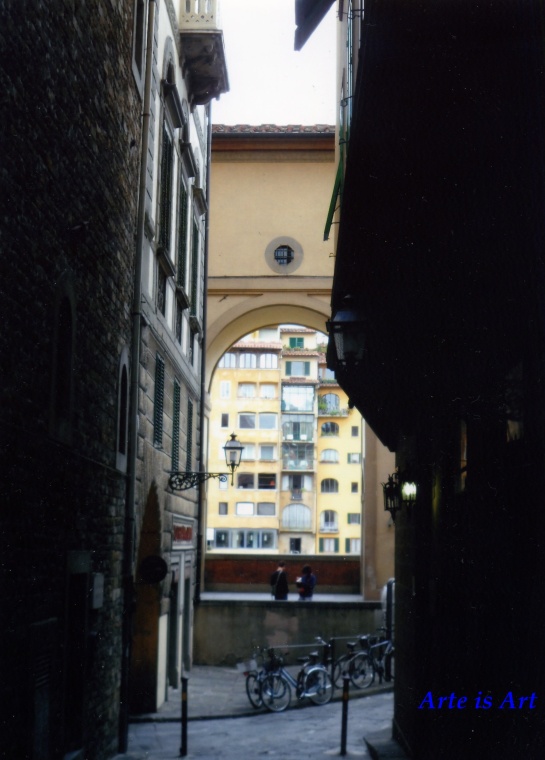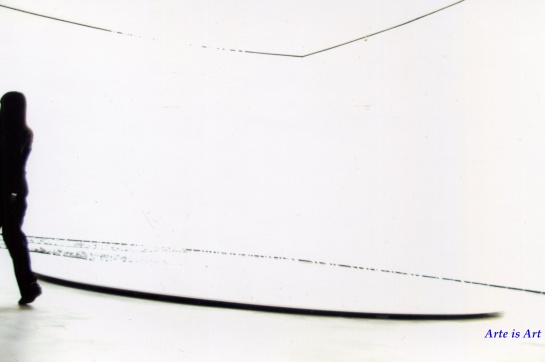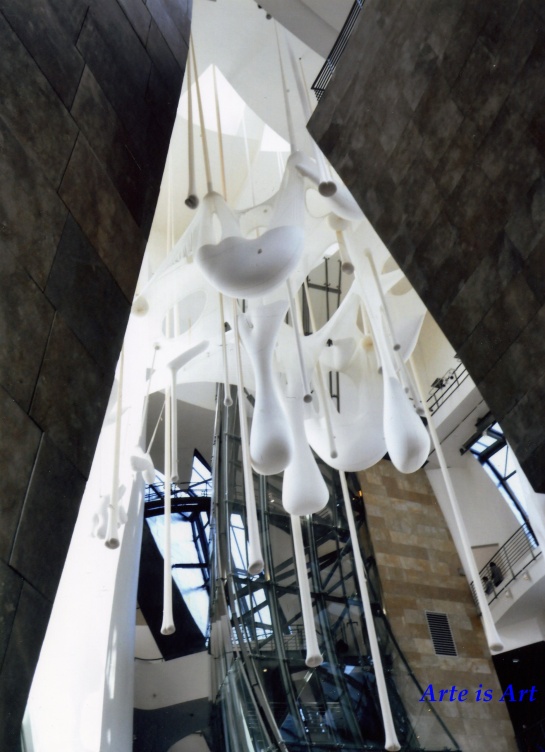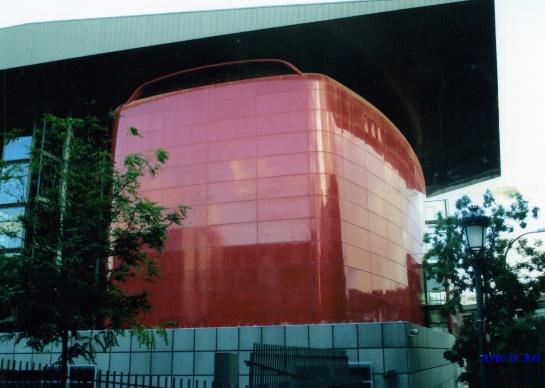This slideshow requires JavaScript.
World Photo Day, Día Mundial de la Fotografía. El 19 de Agosto de 1839, el gobierno francés liberó la patente del daguerrotipo; por ello ha sido la jornada elegida para los fundadores de este día.
El nacimiento de la fotografía tal y como hoy la conocemos es anterior a 1839. Joseph Nicéphore Niépce tomó la que se considera la primera imagen permanente en 1826, y el daguerrotipo fue inventado por él y Louis Daguerre en 1837. No olvidemos mencionar a Abu Ibn Al-Haytham, matemático, físico y astrónomo musulmán, creador del método científico y responsable del primer diseño de una cámara oscura.

Florencia, Italy

Bilbao, Spain

Bilbao, Spain

Madrid, Spain

Bilbao, Spain

Madrid, Spain
“La Biblia es un drama mundano y el mundo una parábola religiosa”. Marc Chagall.
Un pequeño reducto de paz y arte en el centro de Madrid….
http://www.fundacionolivardecastillejo.org/
Los fotógrafos de la agencia Magnum Photos comenzaron a observar el cine hace más de medio siglo. Robert Capa se unió al universo fascinante de los estudios de Hollywood tras abandonar su papel de corresponsal de guerra, poco después de haber fundado la agencia con Henri Cartier-Bresson, George Rodgers y David Seymour. Inmortalizó a Ingrid Bergman en el rodaje de Encadenados, película dirigida por Alfred Hitchcock en 1946; también a Josef Mankiewicz, Gary Cooper y una larga sucesión de estrellas. En 1961, el productor de Vidas rebeldes contrató a nueve fotógrafos de Magnum Photos para cubrir el rodaje de John Huston en el desierto de Nevada. Esta experiencia dio a los fotógrafos acceso a los platós de cine, una tradición actualmente realizada por autores como Paolo Pellegrin, Abbas o Christopher Anderson.
Al contrario que los “foto-fija” tradicionales, limitados por las directrices de los departamentos de publicidad de los estudios americanos, los fotógrafos de Magnum trabajaron con la libertad y la independencia de criterio que les caracteriza, aportando una mirada nueva e inesperada sobre el día a día de los rodajes y sus protagonistas. Gracias a la existencia de vínculos personales, algunos fotógrafos lograron generar la intimidad necesaria para que los actores, habitualmente constreñidos por el star system, se abandonasen y desvelasen facetas más profundas y ocultas de su personalidad. En algunos casos, el fotógrafo era testigo de lo que no debemos ver. Una singularidad, propia de Magnum Photos, que ha convertido en iconos numerosas imágenes de su acervo.
Esta exposición presenta, a través de doce reportajes, las más bellas imágenes cinematográficas tomadas por los fotógrafos de Magnun Photos. Nicolas Tikhomiroff capta la fragilidad y la gracia de Romy Schneider frente al gigante Wells; Jean Gaumy reinterpreta Lo importante es amar; Denis Stock inmortaliza a James Dean tras la cámara de Nicolas Ray, a John Wayne en El Alamo e ironiza sobre El Planeta de los Simios; Erich Lessing desvela los primeros efectos especiales de Moby Dick; Burt Glinn exalta el talento dramático de Mankiewicz en De repente, el último verano; Bruce Davidson reencuadra las imágenes de Antonioni; Eugene Smith desmaquilla a Charlie Chaplin; Inge Morath se acerca a Volker Schlöndorff…Los fotógrafos de Magnum demuestran su capacidad de observar, analizar y reflejar la industria del cine sin que desaparezca su magia.
La cámara indiscreta. Tesoros cinematográficos de MAGNUM PHOTOS.
Sala de Exposiciones Canal de Isabel II.
Madrid (Spain)
“El dibujo no trata de lo que ves, sino de lo que puedes hacer que otros vean”.
Una sorprendente colección de obras sobre papel cuyo tema central es el entorno inmediato del artista. Su familia, sus amigos, sus conocidos… fueron habitualmente retratados por Degas.
La exposición cuenta además con la singular aportación de más de cuarenta obras muy poco o nunca vistas de su círculo de amistades como Cézanne, Ingres, Fantin-Latour o Toulouse-Lautrec, que aportan una interesante información sobre la intimidad de Degas.
Más de 100 obras entre dibujos, grabados, fotografías, monotipos, una escultura y una carta que arrojan una luz sobre el universo privado de Degas.
EDGAR DEGAS. Impresionistas en privado.
FUNDACION CANAL.
Madrid. (Spain)
Surrealism was not just another artistic movement but an attitude to life that has left a profound mark on all subsequent artistic creation. For the first time this exhibition will reveal how this transformation of modern sensibility had its roots in the profound connection between dream and image in Surrealism. Paintings, drawings, collages, sculptures and photographs by artists such as André Breton, Salvador Dalí, Paul Delvaux, Yves Tanguy, René Magritte, André Masson, Max Ernst, Jean Arp, Claude Cahun and Paul Nougé will be used to construct an overview of this fascinating relationship proposed by the curator José Jiménez, to which little attention has been given in art-historical studies. From the outset, the Surrealists championed the dream together with automatic writing, seeing them as fundamental routes towards the liberation of the psyche. While Freud’s thinking, in particular his great work The Interpretation of Dreams (1900), was crucial for the Surrealists’ own approach to the world of dreams, they were more than mere followers of his ideas. For them, the dream was a field of experience different to that of conscious life, and knowledge of it was essential for the enrichment and expansion of the psyche.
Surrealism and the Dream. Museo Thyssen-Bornemisza.
Madrid. (Spain).
This is the first exhibition about the movement to take place in Spain, despite the importance and influence of theMacchiaioli on Spanish painting at the end of the 19th century.
Macchiaioli. Realismo impresionista en Italia.
Fundación MAPFRE. Madrid. (Spain).
Villa Rufolo – Piazzale dell’Auditorium “Oscar Niemeyer”.
Da sabato 29 giugno a domenica 3 novembre 2013.
Ravello, Italia.
Mimmo Paladino (Paduli, 18 dicembre 1948). È tra i principali esponenti della Transavanguardia, movimento fondato da Achille Bonito Oliva nel 1980 che individua un ritorno alla pittura, dopo le varie correnti concettuali sviluppatesi negli anni settanta. Ha realizzato opere d’intonazione arcaica, accentuate dall’uso di simboli greco-romani, etruschi e paleo-cristiani e di tecniche antiche come l’encausto e il mosaico. Nel 1970 esordisce con collages ispirati a temi mitologici; l’adozione della pittura a olio del 1978 coincide con un ciclo di tele polimateriche, dove la figurazione astratta si abbina a oggetti trovati. Nel 1978 è a New York dove tiene, nell’anno successivo, due mostre personali. Influenzato dall’arte primitiva e tribale, dai primi anni ‘80 ha anche realizzato sculture, figure totemiche in bronzo, legno o calcare, e numerose installazioni. Nel 1980 partecipa alla sua prima Biennale di Venezia. Nel 1985 la Lenbachhaus di Monaco di Baviera organizza la sua prima mostra retrospettiva in uno spazio pubblico. Nel 1988 è invitato con una sala personale alla Biennale di Venezia. Nel 1991 partecipa a una grande mostra a Praga per l’inaugurazione del Castello Reale. Nel 1994 è il primo artista contemporaneo italiano a tenere una mostra in Cina, alla Galleria Nazionale delle Belle Arti di Pechino. Nel 1995 Napoli gli dedica una grande rassegna in tre spazi pubblici prestigiosi. Nel 1999 a Londra si organizza una grande mostra dove viene esposto il grande ciclo dei Dormienti. Nello stesso anno la Royal Academy di Londra lo insignisce del titolo di Membro Onorario. Nel 2008 gli viene affidata la realizzazione di 4 teloni a copertura delle impalcature dei lavori di restauro della torre campanaria del Duomo di Modena. Vanno inoltre segnalate mostre al Kunstmuseum di Basilea, alla Galleria d’Arte Moderna di Bologna e alla Royal Academy di Londra. Le sue opere sono collocate in permanenza in alcuni dei principali musei internazionali tra cui il Metropolitan Museum of Art di New York
Enciclopedia d’Arte Italiana.
Exquisite exhibition at Museo Nacional del Prado, one of the most important collections in the world.
Through thirty paintings this exhibition analyses both Velázquez’s activity as a royal portraitist during the last eleven years of his life, and the way his successors, Juan Bautista Martínez del Mazo and Juan Carreño, rethought and renewed the genre after his death. The tree decades encompassed by the exhibition represent a high point in the history of the Spanish court portrait due to the outstanding pictorial quality of these works and their iconographic innovations.
The close relationship between politics, dynasty and portrait make this exhibition a family chronicle. Through images of Philip IV, his wife and children, visitors witness a key period in Spanish history that began with the arrival of the new Queen, Mariana, and ended when her son Charles II reached the age of majority. This was a period marked by endless problems of succession.
In addition to their artistic importance, these works had functional roles that resulted in numerous versions and copies being made of them. The inclusion here of such derivatives aims to emphasise this issue and encourage comparision with the originals.
Source: Museo Nacional del Prado
Velázquez and the Family of Philip IV. Museo Nacional del Prado.
Madrid (Spain).
The Dalí Universe.
Sorrento (Italy). 2013
Dalí sculptor, Dalí illustrator and Dalí designer. An opportunity to discover various aspects of the Master’s work, such as bronze sculpture, illustrations on the great themse of literature, objects in glass and gold, as well as surrealistic furniture.
Dalí scultore, Dalí illustratore e Dalí designer; genio versatile che sperimentò diversi materiali e tecniche. L’immensa produzione artistica di Salvador Dalí non invecchia mai.

L’Arch of Hysteria di Louise Bourgeois.
Galleria dell’Accademia. Florence. (Italy). 2012.
Arte torna arte is an exhibition presenting over forty works by thirty-two contemporary artists in the historic rooms of the Galleria dell’Accademia in Florence. Francis Bacon, Louise Bourgeois, Alberto Burri, Antonio Catelani, Martin Creed, Gino de Dominicis, Rineke Dijkstra, Marcel Duchamp, Luciano Fabro, Hans Peter Feldmann, Luigi Ghirri, Antony Gormley, Yves Klein, Jannis Kounellis, Ketty La Rocca, Leoncillo, Sol LeWitt, Eliseo Mattiacci, Olaf Nicolai, Luigi Ontani, Giulio Paolini, Claudio Parmiggiani, Giuseppe Penone, Pablo Picasso, Alfredo Pirri, Michelangelo Pistoletto, Renato Ranaldi, Alberto Savinio, Thomas Struth, Fiona Tan, Bill Viola, Andy Warhol.
Mostra che raccoglie oltre quaranta opere di trentadue artisti contemporanei nelle storiche sale della Galleria dell’Accademia di Firenze: Francis Bacon, Louise Bourgeois, Alberto Burri, Antonio Catelani, Martin Creed, Gino de Dominicis, Rineke Dijkstra, Marcel Duchamp, Luciano Fabro, Hans Peter Feldmann, Luigi Ghirri, Antony Gormley, Yves Klein, Jannis Kounellis, Ketty La Rocca, Leoncillo, Sol LeWitt, Eliseo Mattiacci, Olaf Nicolai, Luigi Ontani, Giulio Paolini, Claudio Parmiggiani, Giuseppe Penone, Pablo Picasso, Alfredo Pirri, Michelangelo Pistoletto, Renato Ranaldi, Alberto Savinio, Thomas Struth, Fiona Tan, Bill Viola, Andy Warhol.